Wonjo Daegu Makchang (원조대구막창)
9.0Km 2021-03-30
36, Beonyeong 1-gil, Andong-si, Gyeongsangbuk-do
+82-54-854-3403
It is a hidden restaurant frequently visited by locals. This Korean dishes restaurant is located in Andong-si, Gyeongsangbuk-do. The most famous menu is grilled pork intestine.
Chinjeolhan Hanugalbi (친절한한우갈비)
9.0Km 2021-03-30
677-8, Gyeongdong-ro, Andong-si, Gyeongsangbuk-do
+82-54-857-3333
This is a place that sells only 100% antibiotic-free hanu (Korean beef) from Andong. This BBQ restaurant is located in Andong Station, Gyeongsangbuk-do. The representative menu is grilled Korean beef ribs.
Ujeong Sutbul Galbi (우정숯불갈비)
9.0Km 2021-03-30
10, Eumsigui-gil, Andong-si, Gyeongsangbuk-do
+82-54-841-3727
It is a representative restaurant at the Andong-si Galbi Alley, which sells high-quality Korean beef. This Korean dishes restaurant is located in Andong-si, Gyeongsangbuk-do. The most famous menu is grilled Korean beef ribs.
Daema Sutbul Galbi (대마숯불갈비)
9.0Km 2021-05-25
10, Eumsigui-gil, Andong-si, Gyeongsangbuk-do
+82-54-857-7362
It is a good restaurant in Andong Galbi Alley that’s famous for its soft ribs. This restaurant's signature menu is marinated grilled Korean beef ribs. This Korean dishes restaurant is located in Andong-si, Gyeongsangbuk-do.
Daraewon (다래원)
9.0Km 2021-03-26
852, Gyeongdong-ro, Andong-si, Gyeongsangbuk-do
+82-54-821-8489
A place where you can enjoy various Chinese dishes. This Chinese (cuisine) restaurant is located in Andong-si, Gyeongsangbuk-do. The representative menu is sweet and sour pork.
Sotttukkeong Saengmakchang (솥뚜껑생막창)
9.0Km 2021-03-26
27-33, Gwangseok 1-gil, Andong-si, Gyeongsangbuk-do
+82-54-854-9233
It is a place where you can enjoy grilled special pork parts. This Korean dishes restaurant is located in Andong-si, Gyeongsangbuk-do. The representative menu is grilled pork intestine.
Gimbap Cheonguk Nambu-dong(김밥천국 남부동)
9.1Km 2020-11-27
665 Gyeongdong-ro Andong-si Gyeongsangbuk-do
+82-54-852-9298
It is a place where you can choose many types of meals. This restaurant's signature menu is gimbap. This Korean dishes restaurant is located in Andong-si, Gyeongsangbuk-do.
Hakbongjongtaek / 학봉종택
9.1Km 2025-08-12
2830-6, Pungsantaesa-ro Seohu-myeon, Andong-si, Gyeongsangbuk-do
+82-54-852-2087, +82-10-6811-1106
'Hakbong Head House is the head house of the Uiseong Kim clan and was originally built near Sogyeseodang Village School by Kim Gwang-chan, an 8th-generation descendant of Hakbong Kim Seong-il, in 1762. In 1964, the house was moved to its current location.
The main building (bonchae) was extended from a ‘ㅁ’-shaped structure to a ‘巳’–shape structure. The anchae (women’s quarters) consists of a daecheong (main floored room) measuring 2-kan (a unit of measurement referring to the distance between two columns) on the right, an anbang measuring 2-kan on the left, and kitchen at the end. The upper part of the low-ceilinged kitchen has a gobang (storeroom) in which household goods used to be stored. The daecheong is large compared to the overall size of the house because head houses usually held many ancestral rites.
The Hakbong Head House has an impressive modern garden that was created during construction work carried out when the house was relocated after the Japanese colonial era. The well-maintained garden with its fantastically-shaped trees and rocks also serves as a venue for musical concerts on a regular basis. Guests will surely be fascinated to find out about the history of the people who once inhabited this house and dedicated themselves to the country in times of trouble.
Pagode de briques à 5 étages à Dongbudong (안동 운흥동 당간지주와 오층전탑)
9.1Km 2020-04-14
231, Unheung-dong, Andong-si, Gyeongsangbuk-do
+82-54-856-3013
Dressée durant l’ère Tongil Shilla (654~935), cette pagode de briques mesure 8,35 mètres de haut. La pagode actuelle a été construite avec des briques simples et sans motifs de 27,5 sur 12,5cm par 6cm d’épaisseur.
Elle comportait initialement 7 étages. La partie supérieure dorée a disparu en 1598, lors des deux invasions japonaises (1592~1598). Encore détruite en partie pendant la guerre de Corée (1950-1953), la pagode a finalement été restaurée en 1962.
On dit que le temple bouddhiste Beoprimsa se trouvait à son endroit actuel, ce qui est confirmé par la présence de Dangganjiju situé à l’ouest à 5 mètres de la pagode. Dangganjiju désigne les deux supports soutenant le pilier auquel sont accrochés les drapeaux destinés à louer la dignité, les vertus de Bouddha et des saints bouddhistes.
A chaque étage de cette pagode a été installée une Gamshil , sorte de tabernacle qui abrite des portraits et des statuettes de dieux. Avec les tuiles posées sur la pierre servant de toit, l’existence de cette Gamishil est considérée comme vestige des pagodes en bois qui étaient à la mode avant les constructions en brique.
Sur la partie sud du deuxième étage se trouve une plaque de granit où ont été gravées en relief deux représentations d'Inwang, dieu tutélaire du bouddhisme. Ceci contribue à la beauté de la pagode.
Située sur le parking de la gare ferroviaire d’Andong, cette pagode est très facile à trouver.
Elle a été déclarée trésor nº 56 le 21 janvier 1963.
Pachyai (파챠이)
9.1Km 2021-03-24
42, Jeongeori, 2-gil, Andong-si, Gyeongsangbuk-do
+82-54-823-2226
It is a place where the generous servings and the fantastic combination of seasoning and noodles go well together. This Chinese (cuisine) restaurant is located in Andong-si, Gyeongsangbuk-do. The representative menu is spicy seafood noodle soup.
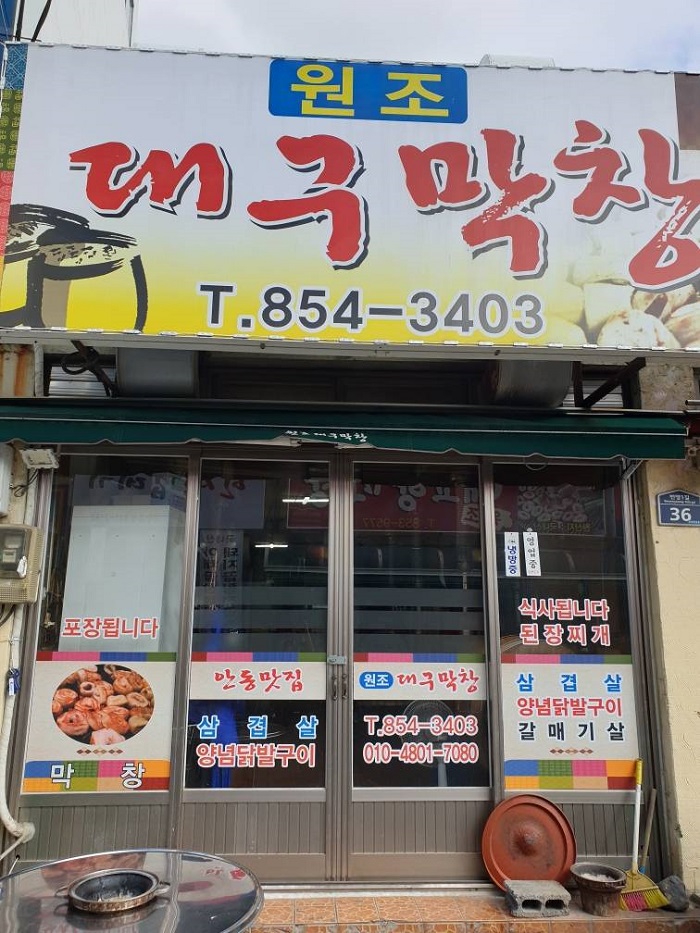
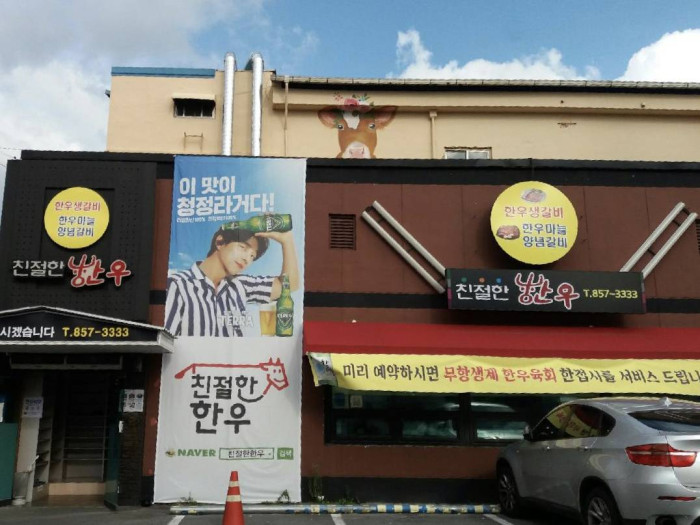
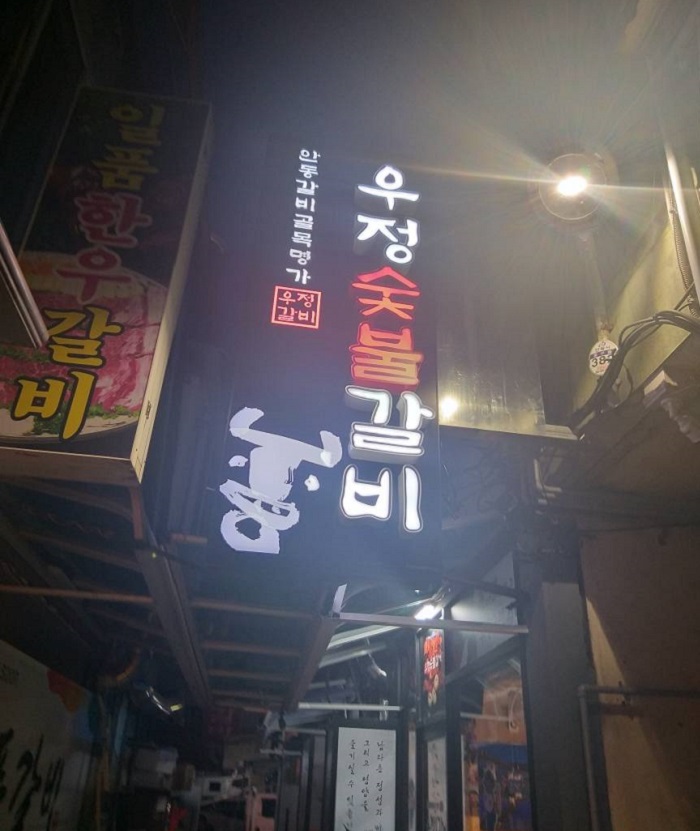
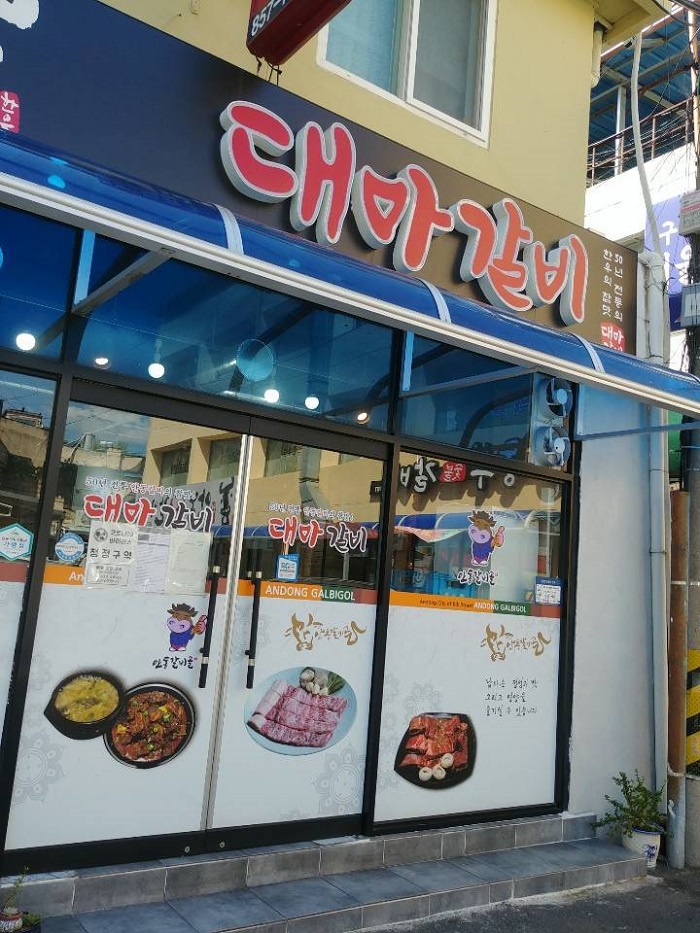
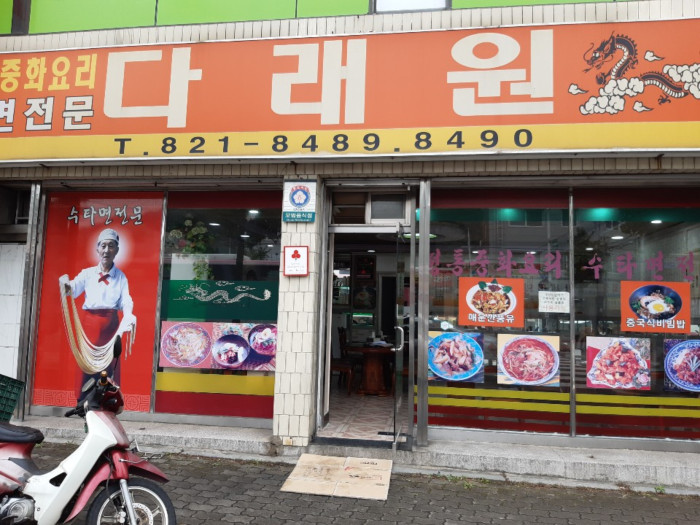
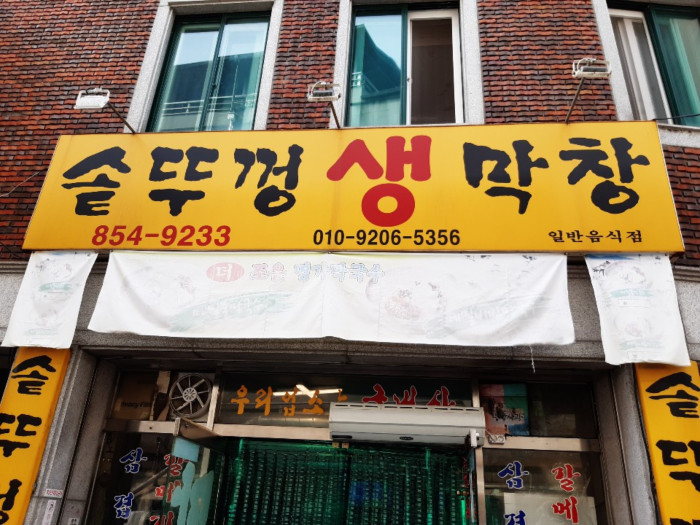
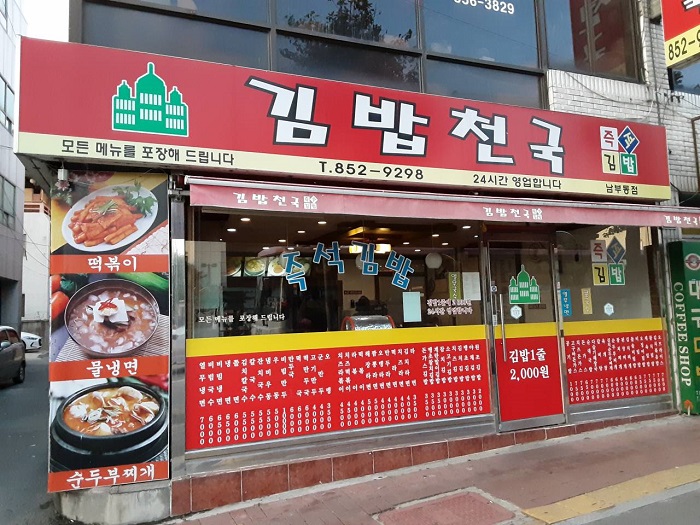
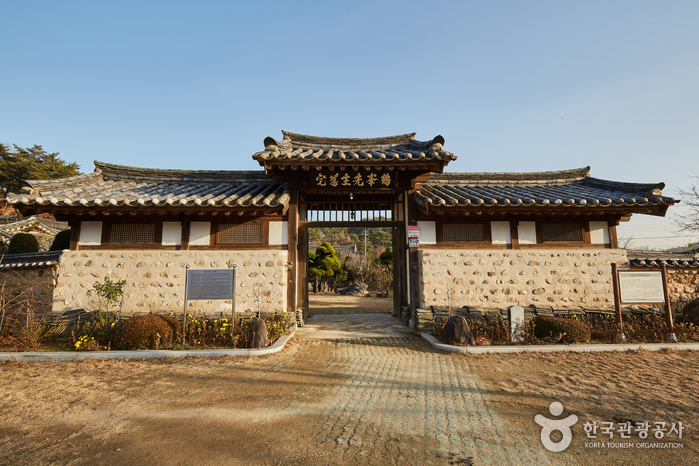
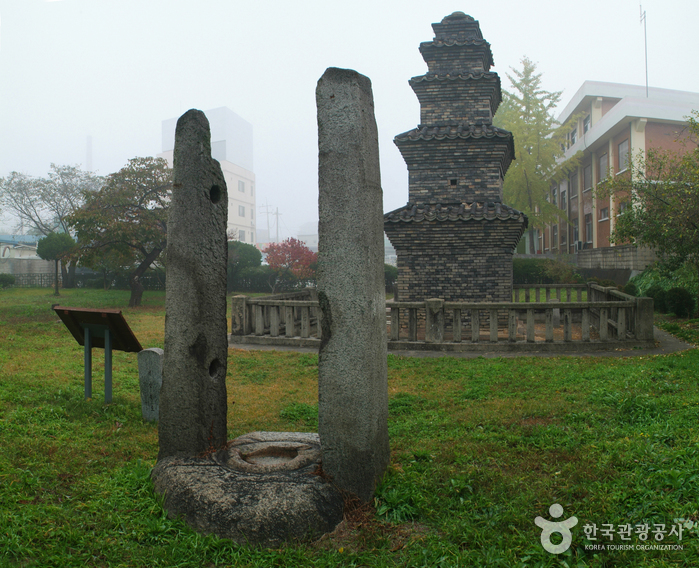
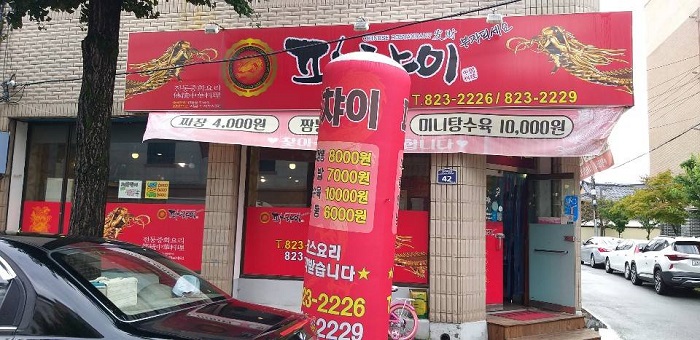
 Français
Français
 한국어
한국어 English
English 日本語
日本語 中文(简体)
中文(简体) Deutsch
Deutsch Español
Español Русский
Русский